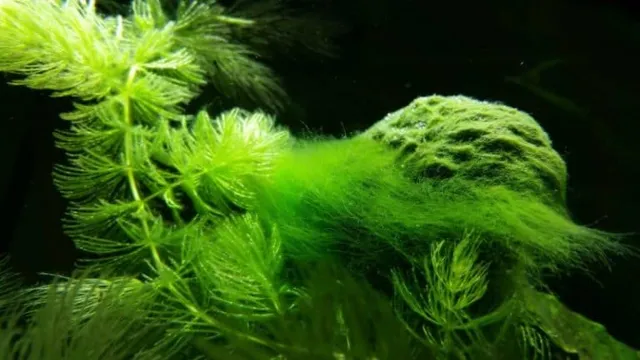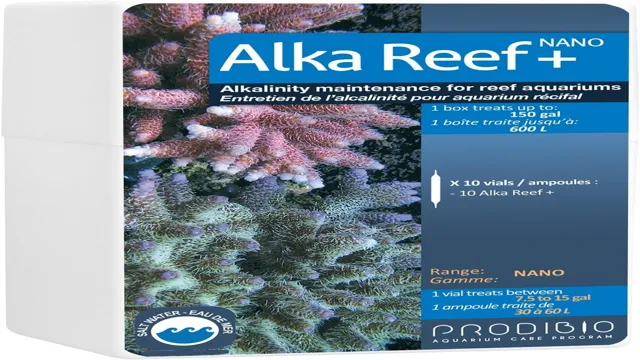How to Add Fish to a New Community Aquarium: Expert Tips for a Smooth Transition

Exciting news! You’re the proud owner of a brand new aquarium and you can’t wait to fill it with vibrant and colorful fish. But after setting up the tank and letting it cycle for a few weeks, the moment has finally arrived to add your aquatic pets. However, it’s important to do this carefully and with consideration to ensure the health and wellbeing of all your fish.
Adding fish to a new community aquarium can be a delicate process, but with some simple steps and a bit of patience, you can create a harmonious and flourishing aquatic environment. In this blog, we’ll explore everything you need to know about adding fish to a new community aquarium, from choosing the right varieties to introducing them to their new home, so you can create a beautiful underwater world for you and your fish to enjoy. So, let’s dive in!
Researching Your Fish Options
When it comes to adding fish to a new community aquarium, it’s crucial to do your research before making any purchases. One of the first steps is to consider the size of your tank. Different fish species have different size requirements, and overcrowding can lead to stress and unhealthy living conditions.
Additionally, you’ll want to research the specific temperaments and preferred water conditions of the fish you’re interested in. Some species may be more aggressive or territorial, while others may require warmer or cooler water temperatures. Another important consideration is whether the fish are compatible with each other.
Certain species may have conflicting behaviors or may even eat each other. By thoroughly researching your fish options, you can ensure that you create a happy and healthy community aquarium for all its inhabitants to thrive.
Considerations for Compatibility
When it comes to creating a harmonious aquarium environment, choosing the right fish is essential. Conducting thorough research on each potential fish species is crucial to ensure compatibility within your tank. Consider factors such as their size, behavior, and diet to guarantee a peaceful coexistence amongst your aquatic pets.
For instance, it’s unwise to mix aggressive fish with timid species as it may lead to constant bullying and harm. As you conduct your research, it’s also essential to identify each fish’s ideal environment, including water temperatures, pH levels, and water hardness. By considering all these factors, you’ll select fish that thrive in the same conditions and live happily together.
Remember to consider all aspects before making your final decision, as compatibility amongst your aquarium inhabitants is key to maintaining a healthy and vibrant underwater ecosystem.

Assessing Water Parameters
When considering what types of fish to add to your aquarium, researching the water parameters they require is a vital step. Different types of fish have different preferences for pH levels, water hardness, and temperature. Before purchasing any new fish, test your aquarium water to ensure it’s within the recommended range for the fish you’re interested in.
If it’s not, you may need to make some adjustments to the water conditions or choose a different type of fish. Some fish can adapt to a wider range of water parameters than others, so it’s important to do your research and understand the needs of the specific species you’re considering. By taking the time to assess water parameters and researching fish options, you’ll be well on your way to creating a thriving, healthy aquarium ecosystem for your aquatic pets.
Preparing Your Aquarium for New Fish
Adding new fish to your community aquarium can be exciting, but it’s important to properly prepare beforehand to ensure their smooth transition into their new home. First, make sure the aquarium is fully cycled and has stable water parameters. Acclimating the new fish to your aquarium’s water is crucial, so slowly drip small amounts of water from the aquarium into their transportation bag over a period of at least 20-30 minutes.
Be sure to also turn off the aquarium lights for several hours after adding new fish to reduce stress. Introduce the new fish to the aquarium one at a time, starting with the least aggressive species, and monitor their behavior closely for a few days. Maintaining a healthy environment with proper nutrition, regular cleaning, and monitoring water parameters will help ensure the long-term health and happiness of your new fish.
So, now you know how to add fish to a new community aquarium.
Cycling Your Aquarium
Cycling an aquarium is essential when preparing it for new fish. It’s a process that involves building up beneficial bacteria in the tank. These bacteria help break down harmful toxins produced by fish waste, ensuring the water is safe and suitable for fish to live in.
The cycling process can take anywhere from a few weeks to a few months, depending on the size of the tank, the type of filtration system, and the number of fish you plan to keep. During this time, you’ll need to monitor the water parameters regularly and make adjustments as necessary. The main keyword for this topic is “cycling your aquarium,” and it’s essential to understand the importance of this process to ensure the health and well-being of your new fish.
So, take the time to cycle your aquarium properly, and your fish will thrive in their new home.
Acclimating Your Fish
Acclimating your fish is an essential step to ensure their survival in a new aquarium. Before introducing new fish to your tank, you need to prepare it adequately. Start by testing the water quality to ensure that pH, ammonia, and nitrite levels are within the recommended range.
Also, maintain the aquarium’s temperature and make sure it is consistent with the type of fish you are planning to keep. Once the tank is ready, gradually introduce the new fish by using a container to acclimate them. This process helps the fish adjust to the water’s temperature, pH, and chemical composition slowly.
Leaving them in the container for 15-20 minutes before releasing them into the tank will allow them to get used to their new environment without being overwhelmed or shocked. Remember to monitor the fish closely for the first few days to ensure they are behaving normally and show no signs of stress or disease. With proper acclimation, your new fish will thrive in their new home.
Introducing Your Fish to the Community
Are you excited to add new fish to your community aquarium? It’s important to introduce them properly to ensure the safety and well-being of both new and existing fish. First, make sure the water parameters are stable and adjusted to the needs of the new fish. Slowly acclimate them to the water by floating the bag they came in for 15-20 minutes before releasing them.
Keep an eye on their behavior and make sure they are accepted by the existing fish. If aggression occurs, remove the new fish and try again another day. Introducing new fish can be stressful for both them and the existing community, but with patience and care, your aquarium can thrive with new and diverse aquatic life.
Gradual Introduction Methods
Gradual Introduction Methods When you have new fish to introduce to your community tank, it’s important to do so gradually. Introducing new fish too quickly can cause stress and even aggression between the fish. One way to gradually introduce new fish is through the quarantine tank method.
This involves keeping the new fish in a separate tank for a few weeks to monitor their health and behavior before introducing them to the community tank. Another method is the drip acclimation method, where you slowly drip water from the community tank into the new fish’s bag or container to acclimate them to the water parameters. This method can take a few hours, but it ensures that the new fish aren’t shocked by sudden changes in water conditions.
By taking it slow and introducing new fish gradually, you can avoid potential problems in your community tank and create a harmonious environment for all your fish to thrive in.
Monitoring and Adjusting
Introducing new fish to your aquarium can be a fun and exciting experience, but it’s important to do it carefully to avoid any problems in the community. Before adding any new fish, make sure to research their specific needs and compatibility with your existing fish. Ideally, quarantine your new fish in a separate tank for a few weeks to monitor their health and behavior.
Once you’re ready to introduce them to the community, start by turning off the aquarium lights to reduce stress and aggression. Then, slowly acclimate the new fish to the water temperature and chemistry before releasing them into the tank. Keep an eye on their interactions with other fish and make any necessary adjustments to ensure they’re getting along.
Remember, introducing new fish can take time and patience, but with proper monitoring and adjusting, you can create a thriving and harmonious aquarium community.
Maintaining a Healthy Community Aquarium
Adding fish to a new community aquarium can be a thrilling experience. However, it’s crucial to maintain a healthy environment for the existing fish and any newcomers. Start by choosing fish species that are compatible with each other and the tank’s size, temperature, and water chemistry.
Introduce new fish gradually, preferably one species at a time, and always monitor their behavior. In case of aggression or stress, isolate the problematic fish or rearrange tank decorations to reduce territorial disputes. Also, regularly test the water quality and perform partial water changes if necessary.
Avoid overfeeding as it can cause excess waste and poor water quality. By following these steps, you’ll ensure a healthy and harmonious community aquarium, where all fish thrive and coexist peacefully.
Conclusion
Adding fish to a new community aquarium can seem daunting, but with the right preparation and approach, it can be smooth sailing. Remember to always research the compatibility of your fish and choose companions that will coexist peacefully. Stick to a slow and steady pace, allowing your tank’s environment to adjust to new inhabitants gradually.
And finally, never underestimate the power of observation. By watching your fish closely, you can ensure their health and happiness in their new home. With careful planning and a keen eye, you’ll be a pro at adding fish to a community aquarium in no time.
Just keep swimming!”
FAQs
When is it safe to add fish to a new community aquarium?
It is recommended to wait at least 24 hours after setting up the aquarium before adding any fish.
Should all the fish be added to the new community aquarium at once?
No, it is best to add a few fish at a time to avoid overwhelming the biological filter system of the aquarium.
How do I know which species of fish are compatible with each other?
Research the temperaments, water requirements, and other traits of each fish species before adding them to the aquarium.
How many fish can I add to a new community aquarium at once?
Generally, it is recommended to add no more than 3-4 fish at a time to a new aquarium, depending on the size and capacity of the tank.
What should I do if the new fish are being bullied or attacked by other fish in the aquarium?
Separate the aggressive fish, rearrange the decor and territory of the aquarium, and monitor the interactions between fish to ensure their safety.
How often should I feed the fish in a new community aquarium?
Feed small amounts of food 1-2 times a day, depending on the type of fish and their feeding habits.
How often should I perform water changes in a new community aquarium?
Regular water changes should be performed once a week or as needed to maintain a healthy and clean environment for the fish.






